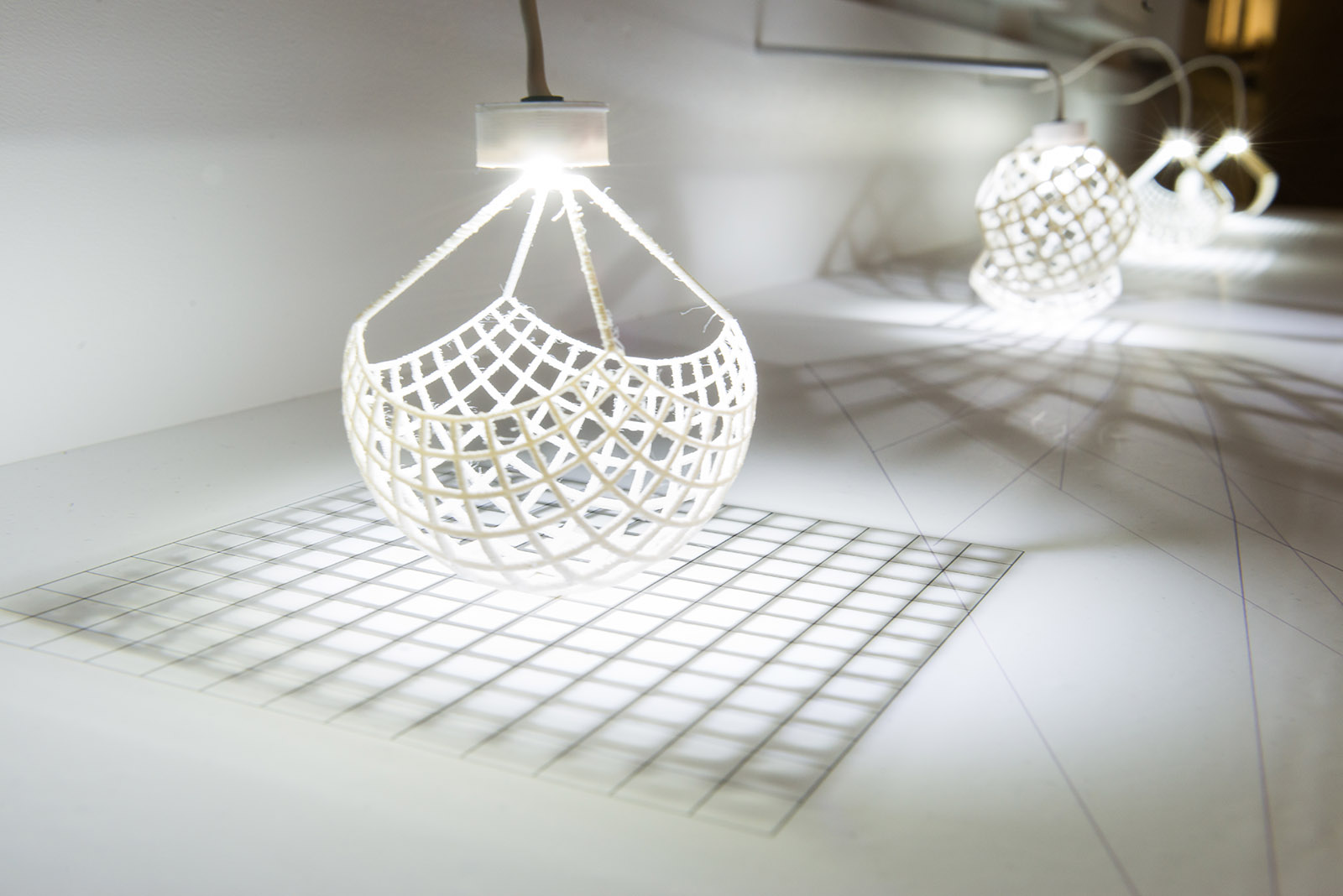Ambiguous Pictures: Dynamic Projections of Non-Euclidean Space

by Iman Fayyad (MArch ’16), Irving Innovation Fellow, 2016
The art historian Ernst Gombrich reminds us that the 2-dimensional image is ambiguous. It represents infinite possibilities of 3-dimensional Euclidean configurations. Rather than designing the pictorial space to represent a certain reality according to the conventions of drawing, the challenge here is to design a 3-dimensional reality that responds to a fixed constraint—a planar picture plane—forcing physical objects to morph in deference to it. Illusions work because they manipulate our established understanding of well-acquainted realities (in our built environment, this is largely orthogonal Cartesian geometry). By accommodating the hyperbolic distortions of reality in visual space, our spheroidal field of vision is embodied in forms in real space to appear to look “correct,” or familiar, from certain points. From all other (infinite) points in space, those same objects appear to liquefy, creating the illusion of constant deformation of form in real time. Here, perspective provides cognitive perceptions of objects (in pictorial space) with topological and typological identities different to those belonging to the same objects in reality.




